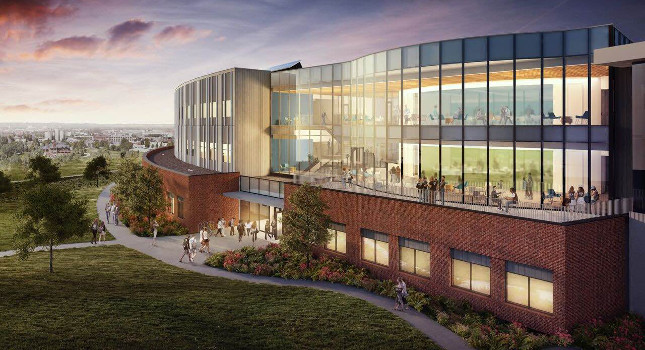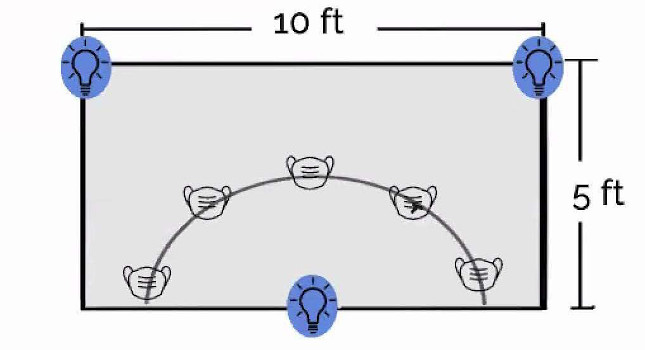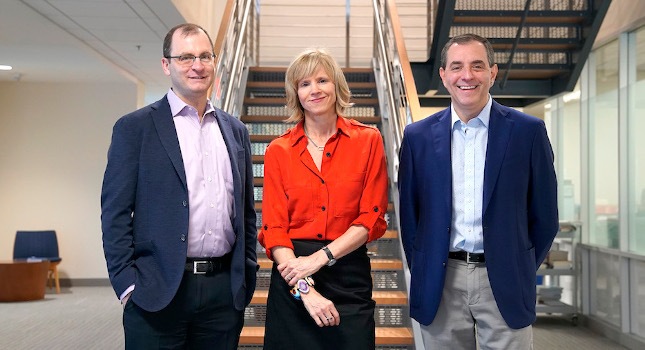Gonzaga University launched construction of its $56 million Integrated Science and Engineering facility, which will enable faculty and students to engage in important significant theoretical and applied work in a learning environment.

Gonzaga University ceremonially launched construction of its $56 million Integrated Science and Engineering (ISE) facility, heralding a new phase of expansion in science, technology, engineering and math (STEM)-related educational and interdisciplinary collaboration. The facility enables faculty and students to engage in important significant theoretical and applied work in a learning environment.
Community leaders along with Gonzaga Trustees, Regents, faculty, staff and students were on hand for the ceremonial groundbreaking to mark the start of construction for the facility dedicated to exemplary teaching, learning and undergraduate research. It will add more than 82,000 square feet of labs, classrooms, faculty offices and a special “collaboration studio.”
Scheduled to open in time for fall semester 2021, the facility will contribute to a total of more than 270,000-square-feet dedicated to classroom and laboratory education for STEM disciplines.
“We do seek as an institution to do the best possible work at preparing our students to be competitive, innovative and creative in the collaborative fields of science and technology, engineering and mathematics but also in related areas where again interdisciplinary studies become possible,” said Gonzaga President Thayne McCulloh, D.Phil. “The ISE will not only be a home for students and faculty who can imagine and create, it will be a place that will allow others, who for so long have imagined new possibilities for this institution, to join with us in celebrating accomplishments and the future to come.”
Skybridges will connect the new facility with the PACCAR Center for Applied Science and the chemistry and biology departments in Hughes Hall. The PACCAR Center, which opened in 2009, is connected via a sky bridge to the Herak Center for Engineering.Funding for this project will come from a variety of sources, including donations, current resources and financing.
Applications for STEM-related majors at GU have doubled in the past nine years while Washington STEM notes that jobs in these fields “make up the majority of projected family sustaining job openings and will be the hardest to fill with local talent, given the credentials they require.” According to industry estimates, 79,000 jobs will be available in Washington state by 2030 for credentialed STEM professionals.
Karlene Hoo, Ph.D., dean of the School of Engineering and Applied Science, said the facility will allow Gonzaga to better serve its growing student body in the STEM fields, make students more competitive globally, and equip them with the research skills and experiences to explore real-world problems under faculty or research staff tutelage.
“The ISE facility provides the space to allow for a modern multidisciplinary curriculum to be implemented that can address the myriad of global challenges posed by the water-food-energy-planet nexus,” said Dean Hoo, adding it will also foster top-quality STEM and computer science collaboration, and promote untapped areas of bioengineering programs with components of innovation and entrepreneurship.
The ISE represents another example of this extraordinary time of innovation at Gonzaga to advance science education and serve the community and global needs. In mid-September, the University of Washington School of Medicine-Gonzaga University Regional Health Partnership announced a new center for medical education, health sciences and innovation.
Matt Bahr, Ph.D., interim dean of the College of Arts and Sciences, said the facility will provide critical space for existing projects and to expand the scope of projects for undergraduates, including course-based research experiences and independent research projects with faculty.
“This shared facility will help develop new collaborations in curriculum, projects, and networks that will support our students and their goals,” Bahr said. “This is exceptionally important as it relates to diversity and inclusion in STEM disciplines — where women and underrepresented minorities are more likely to be engaged when they experience collaborative, interdisciplinary, hands-on learning with demonstrated real-world applications of what they are learning.”
The facility will serve all majors through core curriculum classes — providing opportunities for all undergraduates to engage in integrated environments to solve problems, create commerce, and explore disciplines of innovation and entrepreneurship, all balanced with a heart and mind for the common good.



